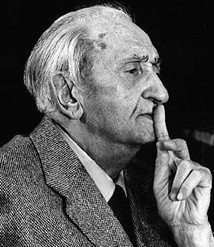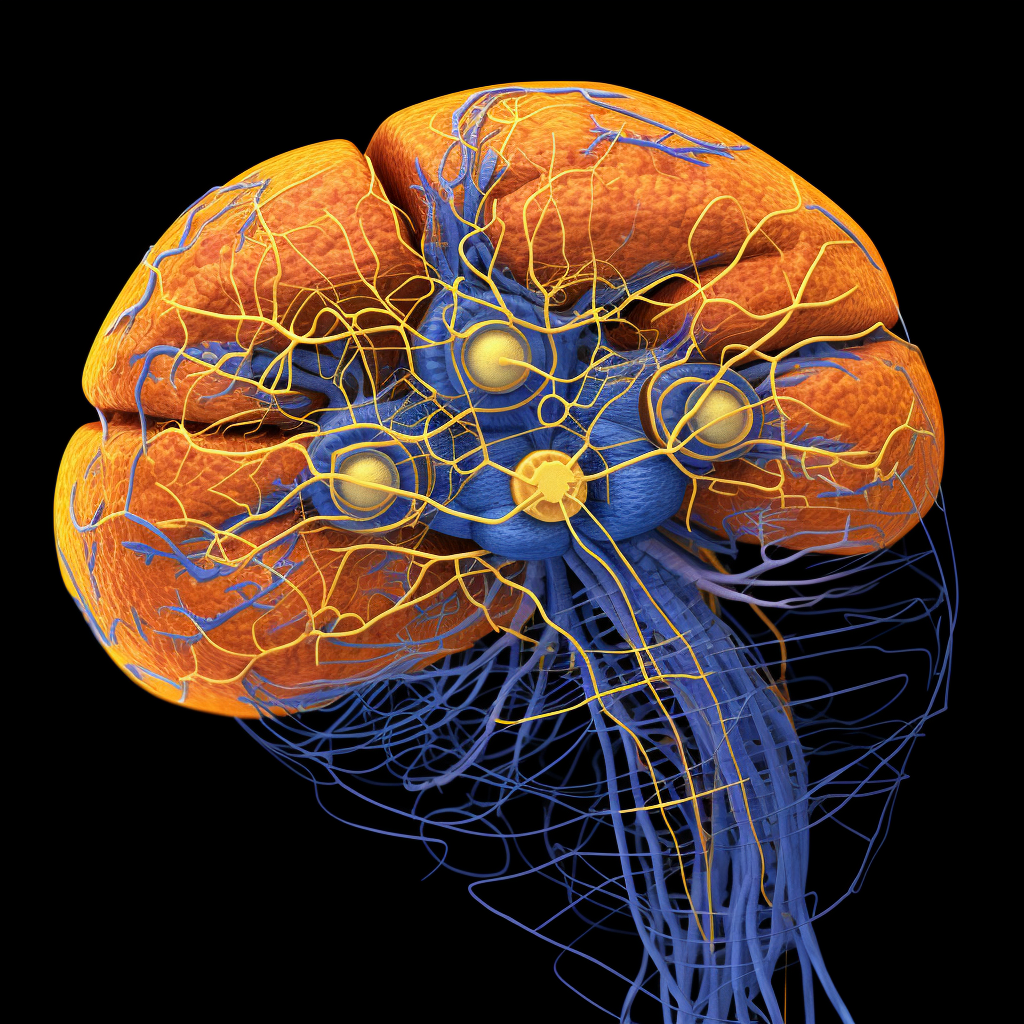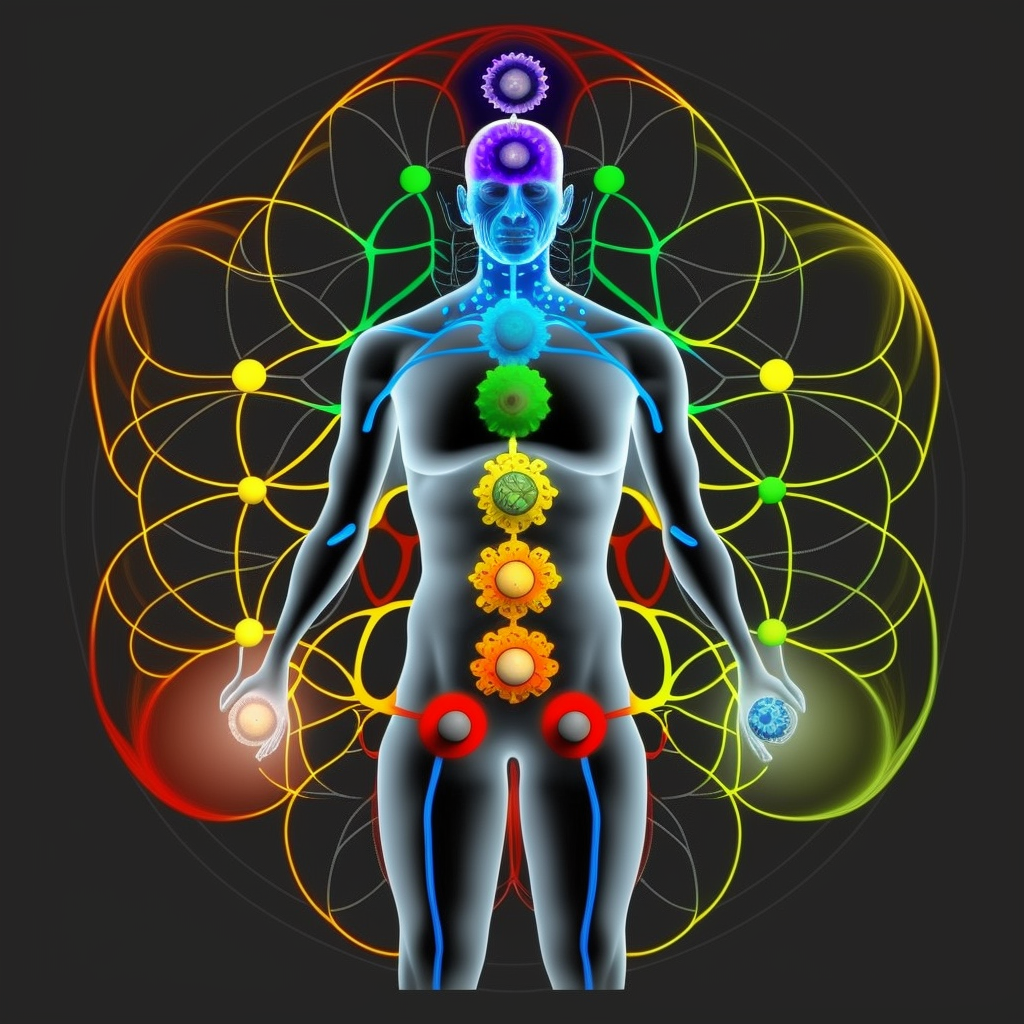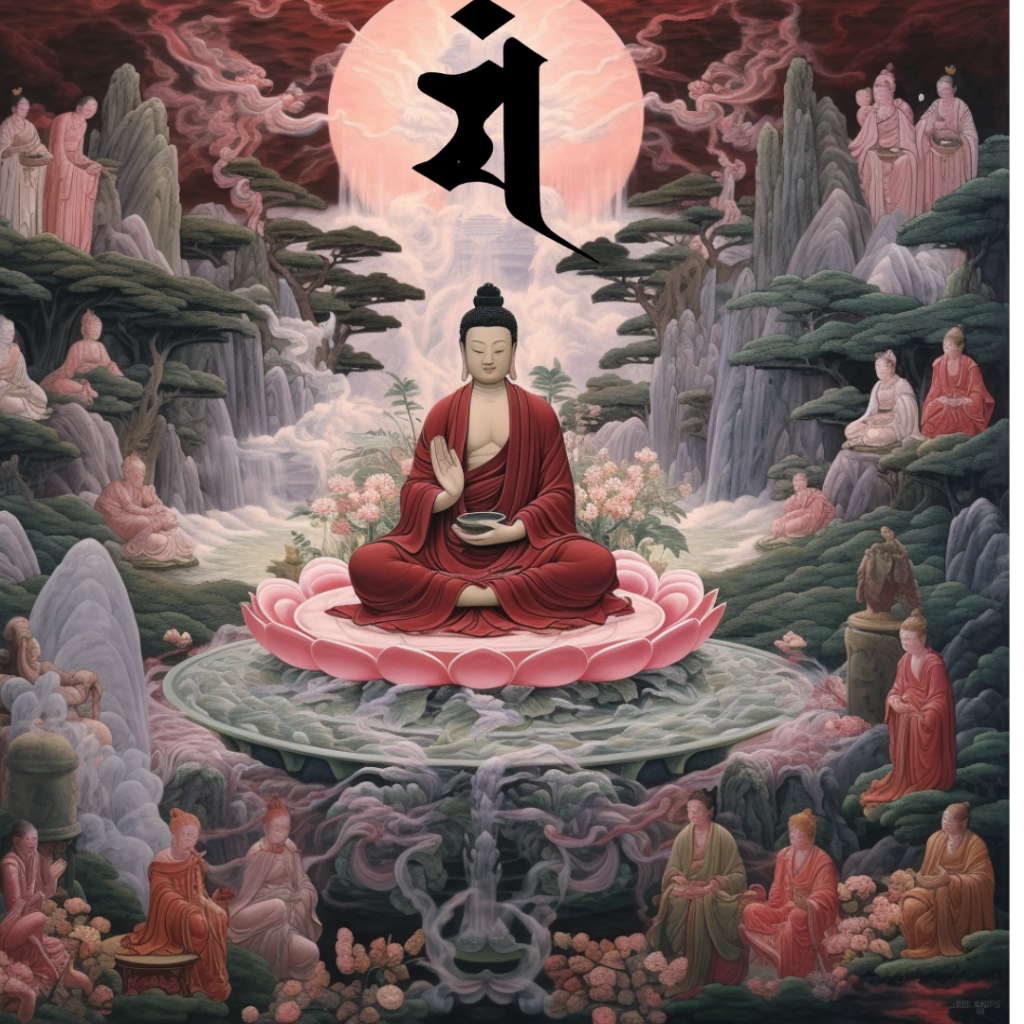阿含経( Ⅰ) 雑 阿含経: 一切 事 経 出家 仏教 とは 世 を 捨て て 家族 と 離れ、 僧侶 として 修業 を 進め て いく。 要するに お 坊さん を 主体 と し た 仏教 です。 出家 し ない で 世俗 で 生活 し ながら 仏教 を 信心、 修行 し て いく 在家 の 人 を 主体 と する のが 在家 仏教 です。 在家 として 仏道 を 実践 する 人 にとって は、 一番 重要 な お 経 と 言える でしょ う。 それ は なぜ かと いう と、 この お 経 に 基 ずい て 修行 する なら ば、 在家 の 者 で あっ ても 出家 以上 の 存在 になり、 現世 で 成仏 する こと も 可能 で ある と 説か れ て いる から です。 お釈迦様 の 仏教 は 出家 仏教 でも なけれ ば 小乗仏教 でも なく、 在家 の 者 でも 成仏 できる と 説か れ て いる の だ、 という こと が はっきり 示さ れ て いる のが、 この「 一切 事 経」 なの です。 < 如是我聞( に ょぜがもん) > 「私 は この よう に 仏 さま から うかがい まし た」 という 意味 です。 この 私 とは お釈迦様 の 十大弟子 の ひとり で、 記憶 力 第一 と 言わ れ た アーナンダ( 阿 難) で ある とさ れ て おり ます。 アーナンダ という 方 は、 二十 五 年間 にわたって お釈迦様 の お そば 近く に 仕え、 その 説法 の 一言一句 を 残ら ず 記憶 し て い まし た。 お釈迦さま が お 亡くなり に なっ た 直後、 この アーナンダ や 大 長老 の マハ― カッ サバ を 含め た 五百 人 の 仏弟子 たち < 如是我聞( に ょぜがもん) > 「私 は この よう に 仏 さま から うかがい まし た」 という 意味 です。 この 私 とは お釈迦様 の 十大弟子 の ひとり で、 記憶 力 第一 と 言わ れ た アーナンダ( 阿 難) で ある とさ れ て おり ます。 アーナンダ という 方 は、 二十 五 年間 にわたって お釈迦様 の お そば 近く に 仕え、 その 説法 の 一言一句 を 残ら ず 記憶 し て い まし た。 お釈迦さま が お 亡くなり に なっ た 直後、 この アーナンダ や 大 長老 の マハ― カッ サバ を 含め た 五百 人 の 仏弟子 たち ● 阿含経( Ⅰ) 雑 阿含経: 一切 事 経 の 現代語 訳 (Ⅰ-1) この よう に 私 は 聞き まし た。 或 る 時、 仏様 が カピラヴァットウ の ニグローダ 園 に おと どまり に なっ て おら れ まし た。 そこ へ 在家 の 弟子 で あり、 仏様 の 従兄弟 でも ある マハナーマ が、 数人 の 在家 信者 を 引き連れ て 現れ、 仏 足 頂礼 の 礼 を し て 仏 さま の 前 に 座り、 質問 いたし まし た。 「世尊 よ、 優婆塞( うば そく・在家 仏教 徒) とは どの よう な 人 に対して 名 つけ られ た もの で あり ましょ う か?」 と。 仏様 は マハナーマ に「 在家 の 者 が 仏 や 師 と なる 僧侶 の もと に 行き、『 自分 が 生き て いる 限り、 死ぬ までの 今後 一生 を通して 三宝 に 帰依 いたし ます。 私 を 優婆塞 として お 認め ください』 と 申し出 て、 仏 や 僧侶 が それ を 認める なら ば、 その 者 は 優婆塞 となり ます」 と 告げ られ まし た。 (Ⅰ-2) マハナーマ は 仏様 に 申し上げ まし た。「 世尊 よ、 完全 な 優婆塞 に なる には どの よう に すれ ば よろしい の でしょ う か?」 と。 仏様 は マハナーマ に 告げ られ まし た。「 その 者 に 信 が あっ ても 戒 が なけれ ば 真 の 優婆塞 とは 呼べ ませ ん から、 精進 し て 浄戒 を 守っ て、 信 と 戒 の 両方 を 身 に つけ なさい」 (Ⅰ-3) 「信 と 戒 が そろっ ても、 布施 を 行わ なけれ ば 真 の 優婆塞 とは 呼べ ませ ん。 努力 と 工夫 によって 布 施行 を 実践 し、 信 と 戒 と 施( 布施) を 円満 に 納め なさい」 (Ⅰ-4) 「もろもろ の 都合 を つけ て、 おり ある ごと に 出家 の ところ へ 参詣 し、 正法 を 拝聴 し なけれ ば 真 の 優婆塞 とは いえ ませ ん。 努力 と 工夫 を 重ね て 出家 の いる 塔寺 に 参詣 し、 沙門 の 教え を 受け なさい。 この 修行 を 聞( もん) と 言い ます。 一心 に 正法 を 拝聴 し て 聞 を 実践 し なさい。 しかし 拝聴 する だけで その 内容 を 身 に つけ なけれ ば、 やはり 真 の 優婆塞 とは 言え ませ ん。 です から おり ある ごと に 出家者 を 訪れ、 専心 し て 説法 を 拝聴 し、 聞い た 内容 を よく 身 に つけ て 保ち なさい。 これ が 持( じ) の 修行 です。 諸法 の 深い 意味 を 観察 する 修行 を 観( かん) と 言い ます が、 この 観 が なけれ ば、 やはり 真 の 優婆塞 とは 言え ませ ん。 努力 と 工夫 を 重ね て 信・戒・施・聞 の 修行 を 行い、 聞 で 学ん だ こと を 持 の 修行 で よく 保ち、 保っ た 内容 の 深い 意味 を 観察 し て、 観 の 修行 を 実践 し なさい」 (Ⅰ-5) マハナーマ は 仏様 に 質問 し まし た。「 世尊 よ、 自分 を 安 慰し ても 他 を 安 慰し ない 優婆塞 とは どの よう な 優婆塞 を 指す の でしょ う か?」 仏様 は マハナーマ に 告げ られ まし た。 「自分 は 仏 の 戒 を 受け て それ を 守っ ても、 他者 に 仏 の 正しい 戒 を 受ける こと も、 又 それ を 保つ こと も 勧め ない。 自分 は 布施 を 行っ ても、 他者 が 布施 を 実践 する よう には 勧め ない。 自分 は 塔寺 に 参詣 し て もろもろ の 沙門 に 見え ても、 他者 に 塔寺 に 参詣 し て もろもろ の 沙門 に 見える よう には 勧め ない。 自分 は 熱心 に 沙門 の 説法 を 拝聴 し ても、 他者 に 正法 を 拝聴 し て それ を 受け 保つ よう には 勧め ない。 自分 は 仏法 の 深遠 な 教義 を よく 観察 し て それ について 熟考 し ても、 他者 には 仏法 の 深遠 な 教義 を よく 観察 し て、 それ について 熟考 する よう には 勧め ない。 自分 は 深遠 な 仏法 を 知り、 法 に 近 つき、 法 を 追求 し ても、 他者 が 法 に 近 つき 法 を 追求 する よう には 勧め ない。 マハナーマ よ、 この よう に 八 法 だけを 成就 する もの は、 自分 を 安らか に し 慰め ても 他 を 安らか に し 慰め ない 優婆塞 という の です。」 (Ⅰ-6) マハナーマ は 仏様 に 申し上げ まし た。「 世尊 よ いくつ の 法 を 成就 する 優 婆 塞が、 自分 を 安 ん じ 他 を 安んずる 優婆塞 なの でしょ う か?」 と。 「優婆塞 の 十六 法 を 成就 する 者 が、 自分 を 安 ん じ 他 を 安んずる 優婆塞 です。 では 十六 法 とは どの よう な もの でしょ う か? マハナーマ よ。 自分自身 が 正しい 信 を 持つ と共に、 他者 にも それ を 確立 さ せる。 自分 が 浄戒 を 保つ と共に、 他者 にも 浄戒 を 確立 さ せる。 自分 が 布施 を 行う と共に、 他者 にも 布 施行 を 教える。 自分 が 塔 寺 参詣 し て もろもろ の 沙門 に 見える と共に、 他者 にも 塔寺 への 参詣 と 沙門 に 見える こと を 教える。 自分 が 沙門 の 説法 を ひたすら 拝聴 する と共に、 他者 にも 説法 を 拝聴 する こと を 教える。 自分 が 法 を 受持 する と共に 他者 に 受持 する こと を 教える。 自分 が 仏法 の 深 義 を 観察 する と共に、 他者 に 仏法 の 深 義 を 観察 する こと を 教える。 自分 が 仏法 の 深 義 を 知っ て 法 に 近 つき つき 法 を 追求 する と共に、 他者 に 仏法 の 深 義 を 理解 さ せ て、 又 法 に 近 つき 法 を 追求 する 修行 を 行わ せる。 マハナーマ よ。 この 十六 法 を 成就 する 優婆塞 の もと には、 あの もろもろ の 大衆 が すべて 参詣 する よう になり ます。 その 大衆 とは いわゆる バラモン たち、 クシャトリア たち、 長者 たち、 沙門 たち で あり、 それら の 人々 の 中 において も 十六 法 を 成就 する 優婆塞 の 威徳 は 大いに 輝き 続ける のと 同じ よう に、 優婆塞 の 十六 法 を 成就 する 者 の 威徳 は 大いに 輝き 続ける の です。 マハナーマ よ。 この よう に 優婆塞 の 十六 法 を 成就 する 者 は、 世間 に 得 難い 存在 なの です」 と。 マハナーマ は この 仏 さま の 説法 を 拝聴 し て 大いに 喜び、 また 仏 の 教法 を 讃 歎 し た のち に 座 を 立っ て 礼 を 行い、 その 場 を 去り まし た。 ● 阿含経( Ⅰ) 雑 阿含経: 一切 事 経 の 解説 (Ⅰ-1) < 優婆塞( うば そく) とは 何 か > パーリ 語、 サンスクリット 語 の ウパーサカ を 漢字 に 音 写し た もの で、 普通 は 男性 の 在家 信者 を 指し ます。 女性 の 在家 信者 は 優婆夷( うばい) と 呼び ます。 「寿 尽く る まで 三宝 に 帰依 し」 の 三宝 とは 仏・法・僧、 つまり 仏様 と 仏 さま の 教法、 そして お釈迦様 の 教法 を 実践 する 僧伽( そう ぎゃ・教団) の こと。 ひとたび 入行 し て 本当 の 仏 さま の 修行 を 始め た なら ば、 やはり 一生涯 にわたって 仏 さま の 教え を 守っ て いく という 気持ち気持ち が 生ずる のは 当然 です。 自分 は 生涯 を かけ て 修行 を する、 という つもり で 信仰 し て いる だろ う か? と よく 考え て ごらん なさい。 もしも そういう 気持ち が なけれ ば、 因縁 を 切る こと など とても でき ませ ん。 (Ⅰ-2) < 修行 の 根本 と なる 信 > 宗教 において は 信 が 一番 の 根本 です。 この 気持ち が あっ て 初めて、 お釈迦様 の 教え を 実行 しよ う という 気 に なる の です。 そこで 優婆塞 に なる。 お釈迦様 は、 この 自分 に対して お 説き くださっ て いる。 その よう に 心 の 底 から 感激 し て 読む のが、 正しい お 経 の 読み方 です。 < 正しく 信 を 育てる 戒 > お釈迦様 は「 信」 だけでは だめ だ、「 戒」 が 必要 なの だ と おっしゃっ て い ます。「 戒」 には 二つ の 意味 が あり ます。 一つ は 修行者 として やっ ては いけ ない こと の 取り決め。 もう 一つ は 修行者 として やら なけれ ば いけ ない こと です。 私 たち がやら なけれ ば いけ ない 戒 は、 まず 第一 に 一日 一回 必ず 勤行 を する こと です。 そして 導師 から 授かっ た 戒行・課 行 を 必ず 実行 する という こと。 修行 も 同じ。 一生懸命 に 勤行 を し、 先祖先祖 の ご 供養 を し て、 信仰 の 種 を まく。 その 種 が すくすくと 伸び て いく ため には、 戒 が なけれ ば いけ ない の です。 (Ⅰ-3) < 徳 の もと と なる 布施 の 行 > お釈迦様 は、 布施 を し なけれ ば、 信 と 戒 が あっ ても 完全 な 優婆塞 とは 呼べ ない と 説か れ て おり ます。 布施 によって 初めて 徳 が 生じる から です。 信 を 持ち 戒 を 保つ という こと は、 自分 だけの こと を やっ て いる に すぎ ませ ん。 他 の 人 に 何 かを 施す という こと は、 他 の 人 に プラス を 与える こと になり ます。 どの よう な 難行苦行 で あっ ても、 自分の こと ばかりを 考え て い た のでは、 徳 は 生まれ ませ ん。 他 の 人 に 何 かを 与え て こそ、 自分 の 身 に 徳 が 生じる の です。 人間 という もの は 徳 が なけれ ば 何一つ 成功 さ せる こと は でき ませ ん。 私 は いつも「 人 の 不幸 の 元凶 は 因縁 で ある。 その 因縁 を 切る 成仏 法 を 実践 する こと によって のみ、 人 は 本当 の 幸福 を 得る こと が できる」 と 申し上げ て おり ます。 しかし 不徳 の 身 では、 その 成仏 法 でさえ やり 通す こと が でき ない の です。 一つ の こと を 成功 さ せよ う と 思っ た なら ば、 自分 を 助け て くれる 縁 が なけれ ば いけ ませ ん。 これ が 助 縁 です。 助 縁 は 徳 から 生じ ます。 その 縁 は 徳 に 応じ て 生じる の です。 ソロバン 勘定 を 離れ、 欲得 を 抜き に し て 仏 さま の ため に 働く こと によって のみ、 奇跡的 な 素晴らしい 結果 が 得 られる わけ です。 損得 勘定 を 捨て なさい。 少なくとも 仏 さま の お 手伝い を する、 あるいは 仏様 を 礼拝 する 時 は、 ソロバン 勘定 を 捨て て やっ て ごらん なさい。 そして 本業 にも 精 を 出し て 御覧 なさい。 そう すれ ば、 必ず 素晴らしい 結果 を 導き出す こと が でき ます。 Akane Sutra (I) Satsuki Aru Sutra: All the events of the family Buddhism Abandon the world and leave the family, and continue training as a priest. In short, it is a Buddhism whose main subject is a monk. In-home Buddhism is mainly composed of in-home people who practice and practice Buddhism while living in a secular world without having to go home. For those who practice Buddhism as a resident, it can be said to be the most important one. The reason for this is that if we practice based on this process, it is said that even if a person is a resident, it becomes more than a birth, and it is possible to conclude in this world. Buddha’s Buddhism is also a Buddhist Buddhism It is this “everything” that clearly states that it is said that it is possible to practice Buddhism not only in Mahayana Buddhism but also in the home. <Nyoze gamon> It means that I was asked by the Buddha in this way. I am one of the 10 Great Disciples of Buddha, and is said to be Ananda, who was said to have the highest memory. For twenty-five years, Ananda served near the Buddha’s side and remembered every word of his doctrine. Immediately after the Buddha died, 500 Buddhist disciples, including this Ananda and the elder Maha Kassaba <Nyoze gamon> It means that I was asked by the Buddha in this way. I am one of the 10 Great Disciples of Buddha, and is said to be Ananda, who was said to have the highest memory. For twenty-five years, Ananda served near the Buddha’s side and remembered every word of his doctrine. Immediately after the Buddha died, 500 Buddhist disciples, including this Ananda and the elder Maha Kassaba ● Ah Sutra (I) Miscellaneous Ah Sutra: A modern translation of everything (I-1) I heard this way. At one point, the Buddha stayed in the Nigroda Garden in Capilavatto. Mahanama, a disciple of the resident and a cousin of the Buddha, appeared with a few followers of the house, and sat in front of the Buddha to ask and question. “Oh, what kind of person is the Ubasou (a Buddhist priest)?” The Buddha said to Mahanama that “the resident is a Buddha or I went to my master monk and said, “As long as I live, I will devote myself to the three treasures for the rest of my life. Please admit me as an apostolic fortress.” If a Buddha or a monk admits that, that person will become an abomination.” (I-2) Mahanama told the Buddha. “Sir, what is the right way to become a complete fortress?” The Buddha was told Mahanama. “If a person has faith, but if the command is proper, then it cannot be called a true dominance, so vegetatively defend the sanctification and acquire both the trust and the belief.” (I-3) “Even if you have all the faith and commandments, you cannot call it a true domination if you do the service. You will practice the service with your efforts and ingenuity, and you will be satisfied with the belief, command and action. (I-4) “For every reason, visit the birthplace at every opportunity and listen to the law, but it is true that even though it is a true dominion, efforts and efforts are repeated. Please visit the temple where the priest is at home and take the teachings of Shamon. This practice is called Mon. Listen to the Holy Law and practice the hearing, but just listen to it. After all, it is still a true doomsday, so it is important to visit the ancestors, listen to the sermons devotedly, and keep what you hear. The practice of observing the deep meaning of various laws is called “Kan”, but if this view is not true, it cannot be said that it is a true dominion. Practice the belief, commandments, practices, and hearings, and keep what you have learned in your training well, and observe the deep meaning of the content that you have held, and practice the training of observation” (I-5). Mahanama asked the Buddha a question. “Sir, what do you mean by a prince who comforts himself but not the other, what does it mean? The Buddha was told Mahanama. “I do not accept or obey the Buddha’s commandments, nor do I recommend others to receive or retain the correct Buddha’s commandments. Even if I give them, others do them. I don’t recommend that I look at all the temples of Tomonji and look like all the same, but I don’t recommend others to see all the temples of Tomonji. However, even if you carefully observe the profound doctrine of Buddhism and ponder it, it is not recommended to others. We do not recommend that you carefully observe these doctrines and reflect on them. Even if I know profound Buddhist law, approach it, and pursue it, I do not encourage others to approach it and pursue it. Mahanama, the one who fulfills only the eight laws in this way is a dominance that comforts oneself and comforts the other but does not comfort. (I-6) Mahanama told the Buddha. “How many honors do you have, fulfilling the law of the world, is it the one that secures oneself and the other?” “A person who fulfills the 16th law of the Yuba fortress is the Yuba fortress who keeps himself safe and rests. Then what is the 16th law? Mahanama. While having the right belief in yourself, establish it in others. While maintaining the sanction of oneself, establish the sanctification of others. Not only do you do it, but you also teach others how to do it. Teach yourself that you will be able to see all kinds of temples when you visit the temple, and teach others that you can see the temple and temples. Teach yourself to listen to Shamon’s doctrine and teach others to listen to it as well. Teach yourself to accept the law and accept it to others. Teach yourself to observe the profound meaning of Buddhist law and to observe others as well. I approached the law by knowing the deep meaning of Buddhism At the same time as pursuing the law, let other people understand the deeper meaning of Buddhism and also practice to pursue the law. Mahanama. Under the Yuba fortress, which fulfills this 16th law, all the masses will come to visit. The masses are the so-called Brahmins, Kshatrias, the elders, and the Shamons, and among them, the dominance of the dominion that fulfills the 16th law continues to shine as much as the dominance. The virtue of those who fulfill the sixteenth law will continue to shine greatly. Mahanama. Those who fulfill the 16th law of domination in this way are inaccessible to the public.” Mahanama was very pleased to hear this Buddha’s doctrine, and after praising the Buddhist doctrine, he stood at the stage to thank him and left the place. ● Ah Sutra (Ⅰ) Miscellaneous Ah Sutra: All things (I-1) <What is Yuba Soku?> Uparisaka in Pali or Sanskrit is a transcription of the characters in Kanji, and usually refers to a male resident. A female layman is called a prince. The three treasures of “return to the three treasures until the end of their lives” are the Buddha, the law, and the monks, that is, the Buddhist and Buddhist teachings, and the Buddhist monks who practice the Buddhist teachings. It is natural that once you enter and begin to practice the real Buddha’s training, you will feel the desire to keep the Buddhist teachings for the rest of your life. Do you believe that you will practice for the rest of your life? Please think carefully. If I feel that way, I can’t really cut the ties. (I-2) <Belief that is the basis of training> In religion, belief is the most fundamental. Only with this feeling will I be motivated to carry out Buddha’s teachings. There, it becomes an auntie. Buddha is preaching to me. Like that from the bottom of my heart Impressed reading is the correct way of reading. <Kai to grow faith correctly> Buddha says that “Kai” is not enough, and “Kai” is necessary. “Kai” has two meanings. One is the arrangement of things that must not be done as a practitioner
その秘密が『三供養品』に説かれています。仏教の原点ともいえるこのお経をさっそく読んで
聞如是。一時仏在舎衛国祇樹給孤独
園。爾時世尊告阿難。有三善根。不
可窮尽。漸至涅槃界。云何為三。所
謂於如来所而種功徳。此善根不可窮
尽。於正法。而種功徳。此善根不可
窮尽。於聖衆而種功徳。此善根不可
窮尽。是謂阿難。此三善根不可窮尽
得至涅槃界。是故阿難。当求方便獲
此不可窮尽之福。如是阿難。当作是
学。爾時阿難聞仏所説。歓喜奉行
聞くこと是の如し。一時、仏、舎衛国祇樹給孤独園に在
しき。爾の時世尊、阿難に告げたまわく、「三善根(三
福遺)有り、窮尽す可からずして、漸く涅槃界に至る。
云何が三ど為すや。所謂如来の所に於て功徳を種う。此
の善根窮尽す可からず。正法に於て功徳を種う。此の
善根窮尽す可からず。聖衆に於て功徳を種う。此の善
根窮尽す可からず。是れを阿難、此の三善根は窮尽す可
か6 ず、涅槃界に至ることを得と謂うなり。是の故に阿
難、当に方便を求めて、此の窮尽す可からずの福を獲べ
し。是の如く阿難、当に是の学を作すべし」と。爾の時
阿難、仏の所説を聞きて歓喜奉行しぬ。
このように聞きました。仏さまがコーサラ国の祇園精舎にご滞在の時のことです。ある日、世尊は、阿難にこのようにお告げになられました。
「三善根(三福道)というものがありますが、その功徳は無限であり、涅槃界に至ることができ
るものです。なにをもって三つの善根(福)とするのでしょうか。(第一に)いわゆる如来の所に
おいて功徳を種える、この善根(福)の功徳は無限です。(第二に)正法において功徳を種える、
この善根(福)の功徳は無限です。(第三に)聖衆において功徳を種える、この善根(福)の功徳
は無限です。阿難よ、この三善根(三福道)の功徳は無限であり、涅槃界に入ることができるの
です。したがって阿難よ、三善根(三福道)を修行して、この無限の福を得なさい。このように
阿難よ、この三善根(三福道)を学びなさい」
この教えを受けて、阿難は心より喜び、修行に励みました。
三善根を三福道と呼んでいます。このことについて説明し
ます。
『仏教語大辞典』(中村元著、東京書籍)で「三善根」を引くと、
【三善根】さんぜんごん 無貪善根・無限善根・無療善根の三根。一切の善法がこの三つか
ら生まれるからである。それらは具体的には施・慈・慧となって現われる。三毒の対。
と書かれています。しかし、この『三供養品』に説かれる三善根は、その内容がまったく異な
ります。それなのに、これを三善根という名称のままで弟子たちに教えるのは、非常な誤解を生むもとだとわたくしは考えました。
それでは、この修行法は、どのように呼ぶべきなのでしょうか?
経文中に、
「此の窮尽す可からざるの福を獲べし」
とあるように、この修行法は無尽蔵の福を得る三つの道です。したがって、わたくしはこれを「三福道」と命名しました。この名称ならば無貪善根・無職善根・無療善根の三善根と混同する
ことはありません。
三善根を「三福道」と変えて読誦しているのです。
さて、右の経文を一読すれば、涅槃界に至るためには三善根(三福道)が必要なのだ、という
ことをお釈迦さまが説かれているのが分かると思います。
涅槃界とはなんでしょうか?
普通は涅槃の境地・境界の意味で使われます(ただし本経では違う意味を持っておりますが、それについては後述します)。『五戒品』でも触れたように(本書三七頁参照)、涅槃とはサンスクリット語でニルヴァーナといいますが、生死を超越した境界、完全解脱の境地です。完全解説とは業と因縁から完全に解放された状態です。
わたくしたちは業と因縁の塊です。業と因縁によって輪廻転生を続けています。輪廻転生とは生死の流転がやまず、無限に生死の流転を繰り返すことです。まるで車の輪が廻るように絶え間なく、生と死を繰り返していくので輪廻転生といいます。また、生死流転、生々流転とも呼ばれます。直線ならば、いつかは終点にたどり着くでしょう。ところが輪というのは終わりがありません。終点がないわけです。輪が廻るから無限なのです。ただただ、グルグルグルグルと生死を繰り返すのです。
そういいますと、
「はてしなく廻ってもいいんじゃないですか。いろいろなものに生まれ変わって、さまざまな人生を味わうことができるわけでしょう。男になったり、女になったり、偉くなったりというよう
に、いろいろな人生を味わうことができるのだから、むしろ楽しいじゃないですか」そういう人もいるかもしれません。一度限りの人生ではなく、輪廻転生する方が楽しいという人もいるでしょう。
ところが、輪廻転生は決して楽しいことではありません。むしろ苦しいことです。輪廻転生が苦しいことだから、お釈迦さまは輪廻からの解脱を願って修行したわけです。
なぜ、輪廻転生は苦である、とお釈迦さまは説かれるのでしょうか?
それを理解するためには、まず、仏教の人生観を知る必要があります。
仏教では、まず、人生イコール苦であると見ます。人生は、すなわち苦しみであると考えるのです。わたくしもそのとおりだと思います。たしかに人生には楽しみもあります。けれども、一生のうちに体験する苦と楽を一つずつ相殺していくならば、苦しみの方が多く残るでしょう。にある苦しみの中に、ときどき喜びがあるというようなものではありませんか?
さらには、その喜びが、次なる苦しみの原因になることが多いのです。
仏執でロ人問の々[しみな分類してヽ匯即刻帽と呼んでおります。四苦とは人間の基本的な苦しみです。さらに四苦に付随した苦しみが四つ出てきます。これを最初の四苦と合わせて八苦といいます。通常はそれらを総称して四苦八苦というわけです。
仏教の基本教義として大切なことですから、もう一度復習しましょう。
まず、四苦というのは、生・老・病・死の苦です。これが人間の基本的な苦しみです。さらにその四苦に付随した苦しみが出てきます。それが愛別離苦・怨憎会苦・求不得苦・五陰盛苦の四つです。これらの苦を総称して、四苦八苦といいます。こうしてみると、人間というのは本当に苦の塊です。
四苦の第一は生の苦です。実際に自分の人生を振り返ってみればよく分かると思いますが、生きていくこと自体が苦しみです。生まれたこと自体が苦しみです。生きているからこそ楽しいこともあるけれども、その楽しいことが次の瞬間に苦の種となっています。ですから生は苦であるというしかありません。
第二は老の苦しみです。生きている以上は、だれもが年をとります。必ず老いていきます。これもやはり愉快なことではありません。老いた人ならではの喜びもありましょう。けれども老いれば体力・気力・智力も落ちていくわけですから、「老い」は決して愉快なことではありません。
朝起きて、ひげを剃るために鏡を見ると、
「ああ、我、老いたり」
という感をしばしば抱きます。自分では若い気でいても、若い時のような強い体力を発揮することはどうしてもできません。老いる苦しみというものは、だれしも味わうものです。
第三は病の苦です。生きているかぎりは、病気をすることもあります。だれが考えても、病気は楽しいものではありません。病気によって得るものもありますが、相対的に見れば病気は苦しいものです。
第四は死の苦しみです。人間だれしも死を迎えます。悟りきった人でないかぎり、死は寂しいし、つらいし、苦しいものです。
以上が四苦です。この四苦に愛別離苦・怨憎会苦・求不得苦・五陰盛苦の四つを加えて八苦になります。
愛別離苦とは、自分が愛しているものと離別しなければならない苦しみです。どれほど愛し合っている恋人同士、あるいは夫婦、親子、兄弟、友人であっても、いつかは離別しなければなりません。生き別れもあれば死に別れもあります。いずれにしても愛する人と離別することは、本当に苦しく、つらいことですが、絶対に避けられません。
しかも、それは人間関係だけではありません。愛するものとは、必ずしも人間だけではありまけん。たとえば、お金をこよなく愛している人がいます。
『おわはわ金だりが恋人だ。ほかにはなにもいらない』
また、地位を愛している人もいます。内閣総理大臣、会社の社長、重役、それぞれのポストをこよなく愛しています。
けれども、お金であろうと、地位であろうと、いつかはそれらとおさらばしなければならない時が必ずやってきます。いくら、
「いやだ!」
と叫んでみたところで、どうなるものでもないわけです。
次の怨憎会苦とは、怨んだり憎んだりしている相手と会わなければならない苦しみですが、これもまた愛別離苦に勝るとも劣らない苦しみです。
「憎んだり怨んだりしているような、それほど嫌なヤッならば、会わなきゃいいじゃないか」そういうかもしれませんが、因縁によって離れることができなくなっているから、非常に苦し
いのです。その一つが「夫婦縁障害の因縁」です。最初は愛し合って結婚したとしても、怨憎会苦のもとになる「夫婦縁障害の因縁」があれば、夫婦お互いが憎しみ合うことになります。ま
るで親の仇のように憎み合って、朝から晩までけんかぽかりしています。
「それならば、別れてしまえばいいじゃないですか」
理屈ではそのとおりです。ところが、それが別れられないのです。いろいろな人間関係・経済的理由、その他さまざまな事情があって、とても離婚できません。これが因縁の恐ろしいところです。しかたがないから我慢をしようと思うのだけれども、我慢しきれなくて、毎日けんかを繰り返すのですから、日々地獄です。
It’s like listening. Temporarily in the Buddhist temple of Gion, a lonely garden
Shiki. At the time of the earthquake, he told Abashi, “Sanzen (Sanzen)
There is a fortune, and there is no need for exhaustion, and eventually to the world of the Nirvana.
What do you do three times? Seek merit in the so-called Nyorai place. This
I’m sorry that the good roots of the Seek merit in the law. this
I’m sorry that my good roots are exhausted. Seek merit in the saints. This good
I’m sorry for being exhausted. I’m sorry, this Sanzen root can run out
No, it is a so-called growl that it reaches the Nirvana world. Because of that
Difficult, in search of expedient, get this inexhaustible fortune
Then. Asaku, it’s hard to make a study of this.” When
Asa, do not delight in hearing the Buddhist opinion.
I heard this. This is when the Buddha is staying at Gion Seisha in Korsala. One day, Seson told Abashi this way.
“There is a Sanzen root (Mifukudo), but its merit is endless and it can reach the Nirvana world.
It is something. What are the three good roots (fortunes)? (First) in so-called Nyorai
The merit of this good root (fortune) that seeds merit is endless. (Secondly) seeding merit in the law,
The merit of this good root (fortune) is infinite. (Thirdly) This good root (fortune) merit that seeds merit in the saints
Is infinite. Asan, the merit of this Mizen (Mifukudo) is endless, and you can enter the world of Nirvana.
is. Therefore, Osamu, practice Sanzen (Mifukudo) and obtain this infinite blessing. in this way
Abashi, learn this Sanzen root (Sanpukudo).”
After receiving this teaching, Asa was delighted and devoted himself to training.
Sanzen is called Mifukudo. To explain this
I will.
When you draw “Sanzen” in “Buddhist Dictionary” (Gen Nakamura, Tokyo Book),
[Sanzen roots] Sanzengo: Sangen, which is rootless, rootless, and nonsensical. Are all good laws these three?
Because they are born from Specifically, they appear as an offering, charity, and love. A pair of three poisons.
Is written. However, the content of Mizenne, which is explained in this “Three memorial products,” is completely different.
I will. Nevertheless, I thought that teaching it to the disciples under the name Mizen was a source of great misunderstanding.
So how should this practice be called?
In the sutra,
“Catch this inexhaustible fortune”
As you can see, this practice method is three ways to get inexhaustible fortune. Therefore, I named it “Mifukudo”. If this name is used, it is confused with the three good roots of unscrupulous roots, unemployed good roots, and uncurated good roots
It is not.
I read Mizen roots by changing them to “Mifukudo.”
Now, if you read the sutras on the right, you need Sanzen (Mifukudo) to reach Nirvana.
You can see that Buddha is preaching this.
What is Nirvana?
It is usually used to mean the border of Nirvana or the border (though this has a different meaning in the Nihonkei, it will be described later). As I touched on “The Five Commandments” (see page 37 of this book), Nirvana in Sanskrit is called Nirvana, but it is a border beyond life and death, a state of complete liberation. Full commentary is a state where you are completely free from work and affiliation.
We are a lump of work and fate. I am continuing to reincarnate due to my work and my relationship. Reincarnation is a life-and-death transition that is endlessly repeated. It is called reincarnation because it repeats life and death as if the wheels of a car were turning continuously. It is also called life-and-death flow or live-flow transfer. If it is a straight line, you will eventually reach the end point. However, the circle has no end. There is no end point. It’s infinite because it rotates. However, life and death are repeated.
If you say so,
“Isn’t it okay to go around without a doubt? I think we can be reborn into various things and enjoy various lives. Becoming a man, a woman, or becoming great
Moreover, it’s rather fun because you can enjoy various lives.” Some people find it more enjoyable to reincarnate, rather than a one-time life.
However, reincarnation is never fun. It’s rather painful. Since reincarnation is a pain, Buddha practiced hoping to get out of reincarnation.
Why is Buddha explained that reincarnation is a pain?
To understand it, we first need to know the Buddhist view of life.
In Buddhism, we first see that life is suffering. Think of life as suffering. I also agree with that. Certainly there is fun in life. However, if you try to offset the pain and the comfort that you experience in your life one by one, you will have more suffering. Isn’t it sometimes that there is joy in the suffering of?
Moreover, that joy often causes the next suffering.
In Buddhism, there are many questions about the people of Russia. Four sufferings are the basic sufferings of humans. In addition, there are four sufferings associated with the four sufferings. This is called the 8th pain together with the first 4th pain. Usually, they are collectively referred to as hardships.
It is important as a basic tenet of Buddhism, so let’s review it again.
First of all, the four pains are the pains of life, old age, illness, and death. This is the basic human suffering. Furthermore, the suffering that comes with the four pains comes out. There are four types: Aibetsu separation, grudge hate, unwillingness, and Goinen. Collectively, these sufferings are referred to as struggles. In this way, humans are really a painful mass.
The first of the four pains is raw pain. As you can see by looking back at your life, living is a pain. Being born is a pain. Some things are fun just because we are alive, but that fun becomes a pain in the next moment. Therefore, life can only be said to be suffering.
The second is the suffering of old people. As long as we are alive, we all get older. Be sure to get old. Again, this is not fun. There will be joy only for old people. However, as you get older, your physical strength, energy, and intellect will decline, so “old” is by no means pleasant.
When I wake up in the morning and look in the mirror to shave,
“Oh, I’m old”
I often feel that. Even if you’re young, you can’t exert yourself as strong as when you were young. Old suffering is something everyone enjoys.
The third is illness. As long as you are alive, you may get sick. No one thinks that illness is fun. Some can be gained by illness, but relative illness is painful.
Fourth is the suffering of death. All human beings will die. Unless you are an enlightened person, death is lonely, painful, and painful.
The above is four pains. Adding to these four pains, Aibetsu separation, grudge hate, unsuccessful suffering, and five indulgence, it becomes eight pains.
Love separation is the suffering that you have to separate from what you love. No matter how much you love each other, or couples, parents, children, siblings, or friends, you must someday separate them. There are goodbyes and deaths. In any case, separating yourself from your loved one is really painful and painful, but it is unavoidable.
And it’s not just about relationships. What we love is not necessarily human. For example, some people really love money.
“Oh, my money is my lover. I don’t need anything else.”
Others love their position. I love the post of the Prime Minister, president of the company, and executives.
But whether it’s money or status, there will always be a time when we have to get away with them. How much,
“I refuse!”
When I screamed, it didn’t happen.
The next grudge hate is suffering that you have to meet with a person who is grinning or hating, but this is also the pain that is as good as the love separation.
“If you don’t like that hate or grudge, you should meet up.” Maybe it’s like that, but because I’m unable to leave because of my relationship, it’s very painful.
It is. One of them is the “cause of marital relationship disorder”. Even if you first love each other and get married, if there is a “cause of marital relationship disorder” that causes grudge hatred, the couple will hate each other. Well
He hates each other like his parents, and fights from morning till night.
“If so, why not break up?”
The theory is correct. However, I can’t say goodbye. Due to various relationships, financial reasons, and various other reasons, I cannot divorce. This is the dreadful part of the connection. I have no choice but to put up with it, but I can’t stand it and I have to fight every day.
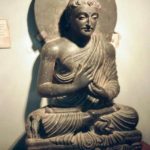
その秘密が『三供養品』に説かれています。仏教の原点ともいえるこのお経をさっそく読んで
聞如是。一時仏在舎衛国祇樹給孤独
園。爾時世尊告阿難。有三善根。不
可窮尽。漸至涅槃界。云何為三。所
謂於如来所而種功徳。此善根不可窮
尽。於正法。而種功徳。此善根不可
窮尽。於聖衆而種功徳。此善根不可
窮尽。是謂阿難。此三善根不可窮尽
得至涅槃界。是故阿難。当求方便獲
此不可窮尽之福。如是阿難。当作是
学。爾時阿難聞仏所説。歓喜奉行
聞くこと是の如し。一時、仏、舎衛国祇樹給孤独園に在
しき。爾の時世尊、阿難に告げたまわく、「三善根(三
福遺)有り、窮尽す可からずして、漸く涅槃界に至る。
云何が三ど為すや。所謂如来の所に於て功徳を種う。此
の善根窮尽す可からず。正法に於て功徳を種う。此の
善根窮尽す可からず。聖衆に於て功徳を種う。此の善
根窮尽す可からず。是れを阿難、此の三善根は窮尽す可
か6 ず、涅槃界に至ることを得と謂うなり。是の故に阿
難、当に方便を求めて、此の窮尽す可からずの福を獲べ
し。是の如く阿難、当に是の学を作すべし」と。爾の時
阿難、仏の所説を聞きて歓喜奉行しぬ。
このように聞きました。仏さまがコーサラ国の祇園精舎にご滞在の時のことです。ある日、世尊は、阿難にこのようにお告げになられました。
「三善根(三福道)というものがありますが、その功徳は無限であり、涅槃界に至ることができ
るものです。なにをもって三つの善根(福)とするのでしょうか。(第一に)いわゆる如来の所に
おいて功徳を種える、この善根(福)の功徳は無限です。(第二に)正法において功徳を種える、
この善根(福)の功徳は無限です。(第三に)聖衆において功徳を種える、この善根(福)の功徳
は無限です。阿難よ、この三善根(三福道)の功徳は無限であり、涅槃界に入ることができるの
です。したがって阿難よ、三善根(三福道)を修行して、この無限の福を得なさい。このように
阿難よ、この三善根(三福道)を学びなさい」
この教えを受けて、阿難は心より喜び、修行に励みました。
三善根を三福道と呼んでいます。このことについて説明し
ます。
『仏教語大辞典』(中村元著、東京書籍)で「三善根」を引くと、
【三善根】さんぜんごん 無貪善根・無限善根・無療善根の三根。一切の善法がこの三つから生まれるからである。それらは具体的には施・慈・慧となって現われる。三毒の対。と書かれています。しかし、この『三供養品』に説かれる三善根は、その内容がまったく異なります。それなのに、これを三善根という名称のままで弟子たちに教えるのは、非常な誤解を生むもとだとわたくしは考えました。
それでは、この修行法は、どのように呼ぶべきなのでしょうか?
経文中に、
「此の窮尽す可からざるの福を獲べし」
とあるように、この修行法は無尽蔵の福を得る三つの道です。したがって、わたくしはこれを「三福道」と命名しました。この名称ならば無貪善根・無職善根・無療善根の三善根と混同する
ことはありません。
三善根を「三福道」と変えて読誦しているのです。
さて、右の経文を一読すれば、涅槃界に至るためには三善根(三福道)が必要なのだ、という
ことをお釈迦さまが説かれているのが分かると思います。
涅槃界とはなんでしょうか?
普通は涅槃の境地・境界の意味で使われます(ただし本経では違う意味を持っておりますが、それについては後述します)。『五戒品』でも触れたように(本書三七頁参照)、涅槃とはサンスクリット語でニルヴァーナといいますが、生死を超越した境界、完全解脱の境地です。完全解説とは業と因縁から完全に解放された状態です。
わたくしたちは業と因縁の塊です。業と因縁によって輪廻転生を続けています。輪廻転生とは生死の流転がやまず、無限に生死の流転を繰り返すことです。まるで車の輪が廻るように絶え間なく、生と死を繰り返していくので輪廻転生といいます。また、生死流転、生々流転とも呼ばれます。直線ならば、いつかは終点にたどり着くでしょう。ところが輪というのは終わりがありません。終点がないわけです。輪が廻るから無限なのです。ただただ、グルグルグルグルと生死を繰り返すのです。
The secret is explained in “Three memorial products.” Read this sutra, which is the origin of Buddhism
Okay. Temporary Buddhist escort Gion supply loneliness
The garden. Elegance of the Honor of the Honor. Arisan Zenne. Not
Exhausted. The stage of Nirvana. The reason is three. Place
The so-called Nyorai metaphysical merit. This good root is inevitable
Exhausted. In the law. Metaphysical merit. This is the root
Exhaustion. The sacred metaphysical merit. This is the root
Exhaustion. The so-called “Asa”. These three good roots are inexhaustible
Toki Nirvana. Due to misery. Hunting flight
This is inevitable. Yorozu. Our work policy
Study. The Edoan Buddhist Buddhist theory. Delight
It’s like listening. Temporarily in the Buddhist temple of Gion, a lonely garden
Shiki. At the time of the earthquake, he told Abashi, “Sanzen (Sanzen)
There is a fortune, and there is no need for exhaustion, and eventually to the world of the Nirvana.
What do you do three times? Seek merit in the so-called Nyorai place. This
I’m sorry that the good roots of the Seek merit in the law. this
I’m sorry that my good roots are exhausted. Seek merit in the saints. This good
I’m sorry for being exhausted. I’m sorry, this Sanzen root can run out
No, it is a so-called growl that it reaches the Nirvana world. Because of that
Difficult, in search of expedient, get this inexhaustible fortune
Then. Asaku, it’s hard to make a study of this.” When
Asa, do not delight in hearing the Buddhist opinion.
I heard this. This is when the Buddha is staying at Gion Seisha in Korsala. One day, Seson told Abashi this way.
“There is a Sanzen root (Mifukudo), but its merit is endless and it can reach the Nirvana world.
It is something. What are the three good roots (fortunes)? (First) in so-called Nyorai
The merit of this good root (fortune) that seeds merit is endless. (Secondly) seeding merit in the law,
The merit of this good root (fortune) is infinite. (Thirdly) This good root (fortune) merit that seeds merit in the saints
Is infinite. Asan, the merit of this Mizen (Mifukudo) is endless, and you can enter the world of Nirvana.
is. Therefore, Osamu, practice Sanzen (Mifukudo) and obtain this infinite blessing. in this way
Abashi, learn this Sanzen root (Sanpukudo).”
After receiving this teaching, Asa was delighted and devoted himself to training.
Sanzen is called Mifukudo. To explain this
I will.
When you draw “Sanzen” in “Buddhist Dictionary” (Gen Nakamura, Tokyo Book),
[Sanzen roots] Sanzengo: Sangen, which is rootless, rootless, and nonsensical. Are all good laws these three?
Because they are born from Specifically, they appear as an offering, charity, and love. A pair of three poisons.
Is written. However, the content of Mizenne, which is explained in this “Three memorial products,” is completely different.
I will. Nevertheless, I thought that teaching it to the disciples under the name Mizen was a source of great misunderstanding.
So how should this practice be called?
In the sutra,
“Catch this inexhaustible fortune”
As you can see, this practice method is three ways to get inexhaustible fortune. Therefore, I named it “Mifukudo”. If this name is used, it is confused with the three good roots of unscrupulous roots, unemployed good roots, and uncurated good roots
It is not.
I read Mizen roots by changing them to “Mifukudo.”
Now, if you read the sutras on the right, you need Sanzen (Mifukudo) to reach Nirvana.
You can see that Buddha is preaching this.
What is Nirvana?
It is usually used to mean the border of Nirvana or the border (though this has a different meaning in the Nihonkei, it will be described later). As I touched on “The Five Commandments” (see page 37 of this book), Nirvana in Sanskrit is called Nirvana, but it is a border beyond life and death, a state of complete liberation. Full commentary is a state where you are completely free from work and affiliation.
We are a lump of work and fate. I am continuing to reincarnate due to my work and my relationship. Reincarnation is a life-and-death transition that is endlessly repeated. It is called reincarnation because it repeats life and death as if the wheels of a car were turning continuously. It is also called life-and-death flow or live-flow transfer. If it is a straight line, you will eventually reach the end point. However, the circle has no end. There is no end point. It’s infinite because it rotates. However, life and death are repeated.
